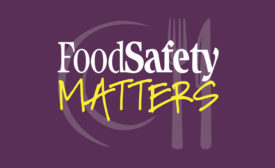Home » food safety management system
Articles Tagged with ''food safety management system''
Pathways to Implementing Food Systems Capacity Building Programs for Smallholder Farmers: Major Constraints and Benefits
Are these programs reaching the smallholder farmers most in need?
June 28, 2024
The Importance of Third-Party Gap Assessment for a Food Safety Management Program
An unbiased gap assessment of a foodservice business' FSMP should be performed by a third party, using a defined set of standards for each business function
April 10, 2023
Current States of Food Safety Culture and FSMSs in Food Establishments
In what ways is your brand either superior to or deficient from the behaviors revealed by your colleagues?

April 5, 2023
Never miss the latest news and trends driving the food safety industry
eNewsletter | Website | eMagazine
JOIN TODAY!Copyright ©2025. All Rights Reserved BNP Media.
Design, CMS, Hosting & Web Development :: ePublishing












